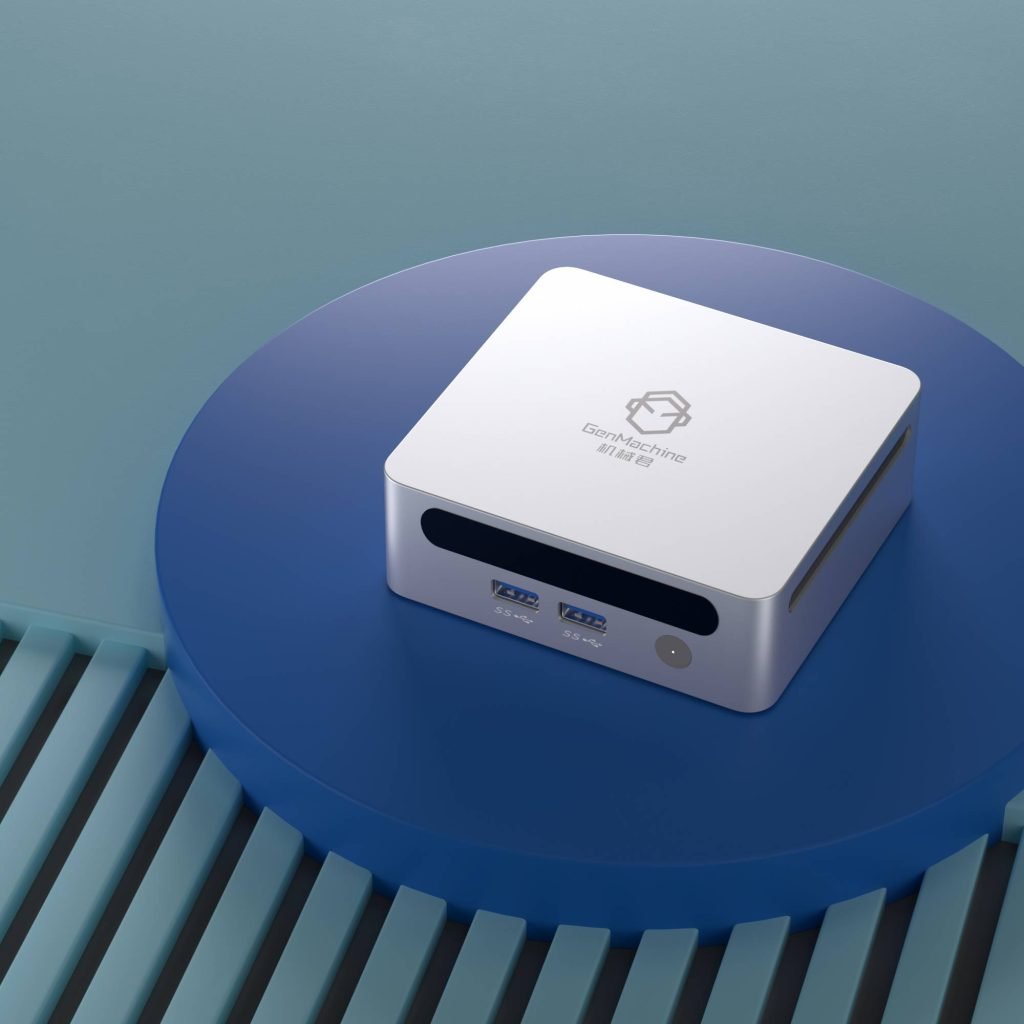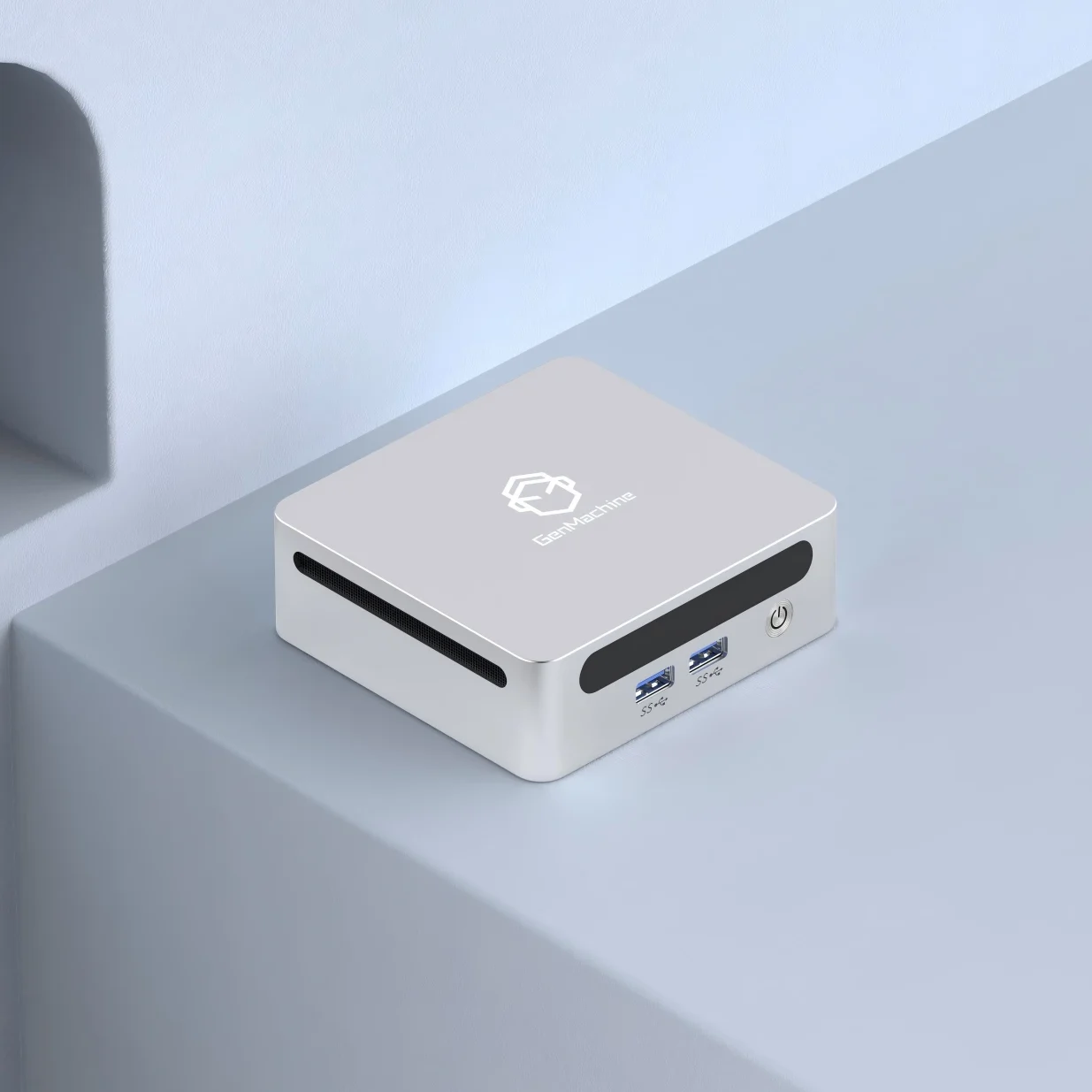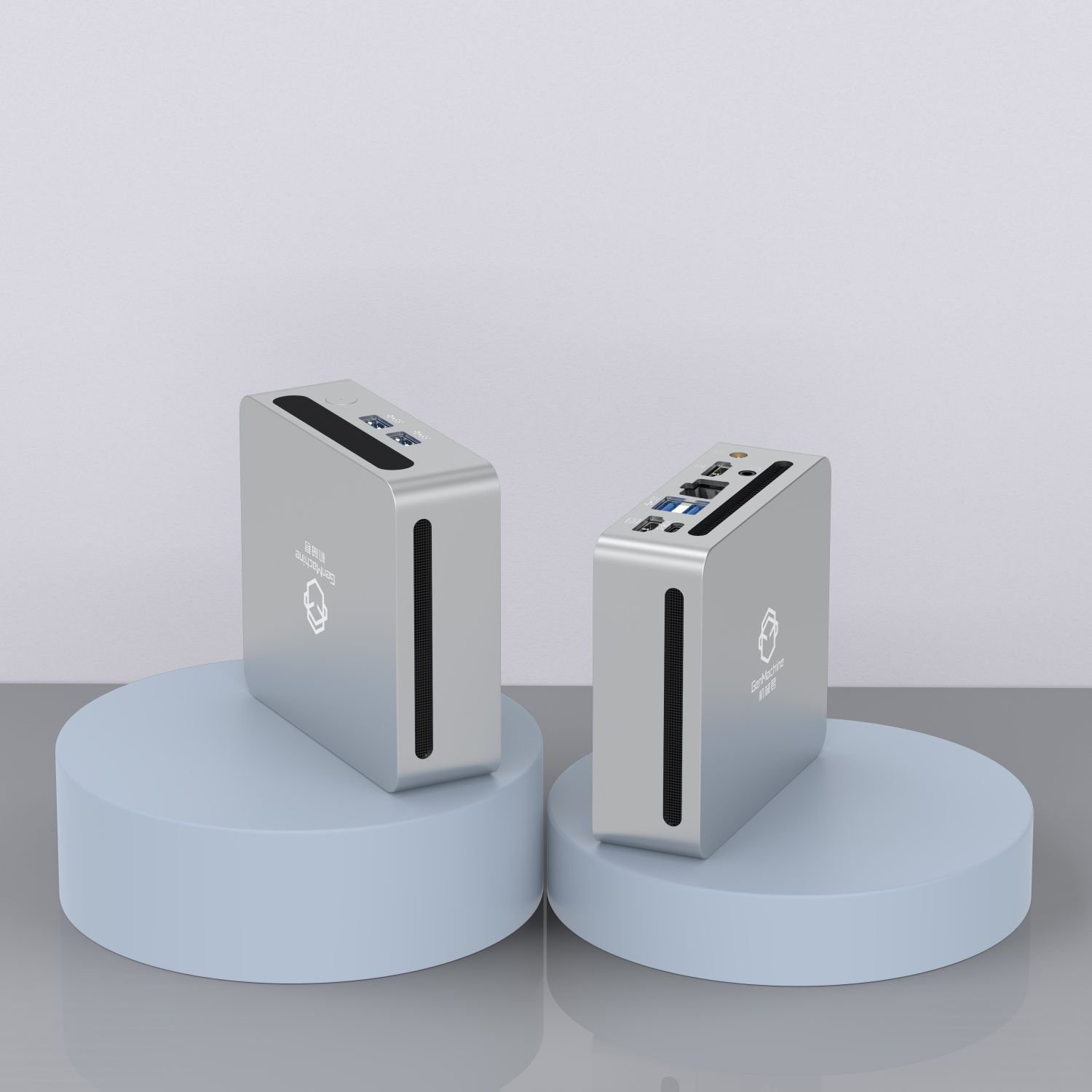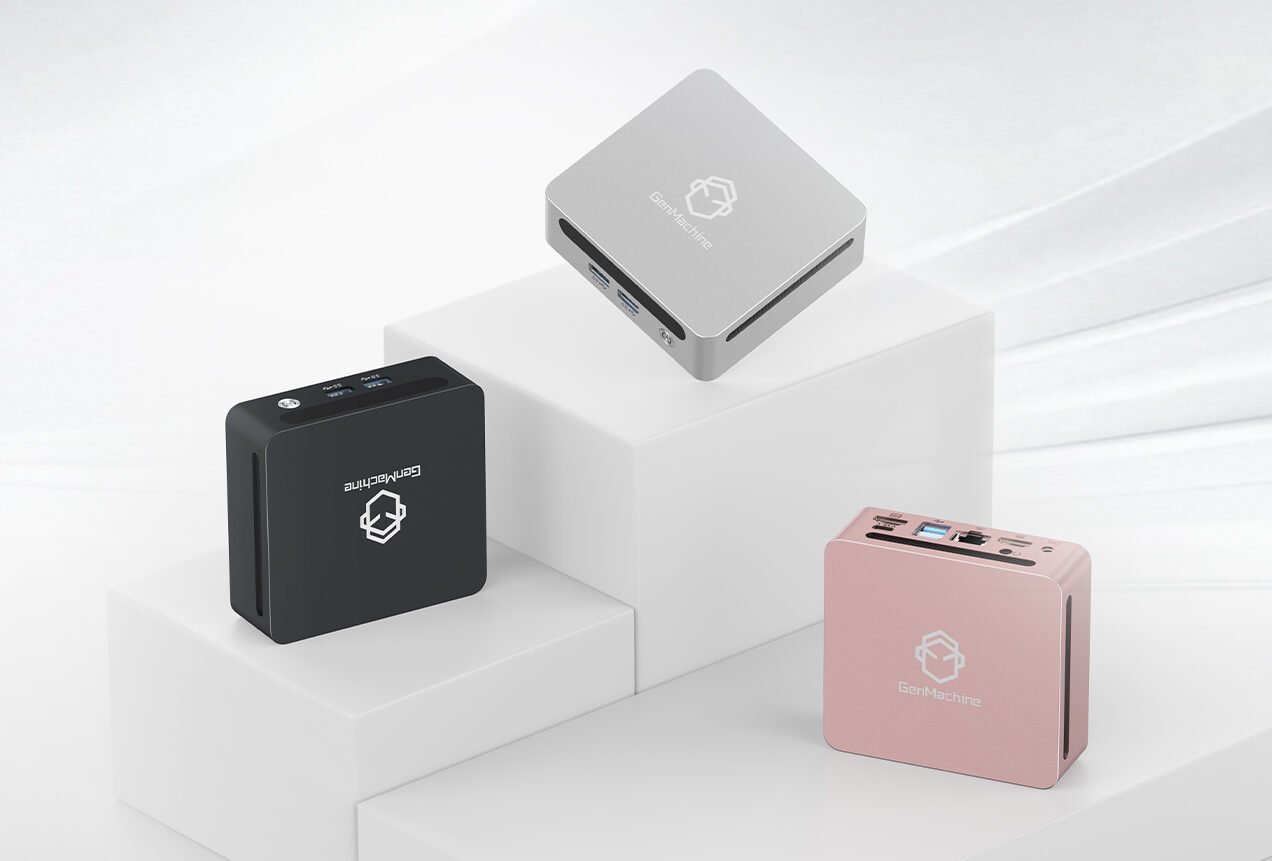Introduction
In the era of rapid development of informatization and digitalization, the modern office environment is also undergoing profound changes. The traditional office model is gradually changing to a flexible, efficient and intelligent direction, and the demand for office equipment in enterprises has also undergone fundamental changes. Especially, the utilization of space, the control of energy efficiency and the convenience of equipment have become more and more important considerations in the design of modern office environment.
In this context, mini pc computer has gradually become a new type of computing equipment that is very suitable for modern office needs. Compared with traditional desktop computers, mini pc computers not only take up very little space, but also can integrate more functions and provide enough performance to meet daily office needs. Therefore, the application of mini pc not only changes the spatial layout of the office, but also has a far-reaching impact on the operational efficiency and cost control of enterprises.

This article will start with the core advantages of mini pc computer, discuss its practical application in office scenes, and analyze its challenges and coping strategies, in order to show the great potential that mini-computer can play in modern office.
The core advantages of mini computers in the office
1. Space saving advantages
Space is a valuable resource in modern office environment. With the increasing demand for office space, especially in today’s accelerated urbanization process, the utilization efficiency of office space in enterprises has attracted more and more attention. Traditional desktop computers occupy a lot of desktop space because of their huge size, which often makes people feel crowded and is not conducive to improving the cleanliness and comfort of the office environment.
Compared with the traditional desktop, the mini pc computer stands out with its tiny size advantage. Mini pc computers are usually only a fraction of the size of traditional desktops, and their hosts are often palm-sized, or even smaller, and can be easily placed in hidden positions such as the back of the monitor and the corner of the desktop, which greatly releases the desktop space. In addition, due to its compact structure and simple appearance, the mini pc computer can perfectly match the modern minimalist office design and enhance the aesthetics of the overall environment.
In the open office area and shared office space, employees often need to change their office locations frequently. Traditional desktop computers often need to carry equipment with great effort, while mini computers are an ideal choice for mobile office because of their portability and portability. The mini pc computer can not only be quickly connected to the existing monitor, keyboard and mouse, but also quickly enter the working state, so that employees can work efficiently anytime and anywhere.
2. Energy cost advantage
Under the background of the current global energy price rising year by year, how to effectively control the operating costs of enterprises, especially the power consumption, has become a key concern of enterprise management. Because of its huge size and high-power consumption, the traditional desktop computer often needs strong power support, and because of its high hardware configuration and high heat dissipation demand, it is often accompanied by high power consumption and air conditioning and refrigeration costs.
One of the biggest advantages of mini pc computer is its low energy consumption. Mini pc computers usually use low-power processors and integrated circuits, such as Intel Core low-voltage series, AMD Ruilong mobile processor, etc. These processors greatly reduce power consumption on the basis of ensuring certain performance. In addition, the mini computer is small in size and low in heat dissipation demand, which reduces the dependence on air conditioners and other equipment, thus effectively reducing the operating costs of enterprises.
Take a large enterprise with hundreds of employees as an example. If the power consumption of each desktop is 200 watts, and each mini-computer only needs 50 watts, assuming that it works 8 hours a day, the annual electricity expenditure gap will be huge. Across the country, large-scale enterprises gradually adopt mini-computers, which can not only reduce the power cost, but also effectively reduce the use load of air conditioners and ventilation equipment, thus achieving more efficient energy management.
3. Advantages of convenient deployment
For the IT department of an enterprise, the deployment and maintenance of equipment is an important task in daily work. Traditional desktop computers usually need complicated wiring, equipment installation and debugging, but mini computers greatly simplify this process because of their plug-and-play characteristics.
In the process of using mini computers, whether IT is to connect with the existing monitor, keyboard and mouse, or to quickly build a workstation for new employees, it only takes a few simple steps to complete, without relying on specialized IT personnel for complex equipment configuration. Mini computers usually use wireless network and Bluetooth technology, which makes the connection between devices more flexible and not bound by wired lines. In some occasions where temporary office work is needed, mini computers can be quickly docked with existing office equipment to provide a plug-and-play working environment.
In addition, the portability of mini pc computer makes it have great advantages in some special scenes. For example, in exhibitions, temporary offices and other occasions, mini pc computers can be used with mobile power supply, and can work stably without even being connected to the mains, which greatly improves the flexibility and adaptability of temporary offices.
The multiple application examples of mini computers in the office field
1. Daily office transaction processing
Mini computers are widely used in daily office, especially in small and medium-sized enterprises. Employees can use mini computers to run common office software smoothly, such as Microsoft Office and WPS Office, and handle documents, forms and presentations. Thanks to its efficient processing power, the mini pc computer performs well in multitasking and can run multiple applications at the same time without being stuck or delayed.
Taking an Internet startup company as an example, employees can use mini pc computers for fast data entry and processing, and at the same time communicate and collaborate with team members efficiently through email clients and instant messaging tools (such as nailing, corporate WeChat, etc.) to ensure the smooth progress of the project. This efficient way of working not only saves a lot of time, but also improves work efficiency and teamwork effect.
2. Multi-screen collaborative office scene
For some industries that need to handle multiple tasks at the same time, multi-screen display has become a common office requirement. With its rich interfaces (such as HDMI, DisplayPort, etc.), mini pc computers can easily connect multiple monitors, helping employees to handle multiple tasks at the same time, avoiding frequent window switching and improving work efficiency.
In the financial industry, analysts and traders often need to view multiple data sources at the same time, such as real-time stock market quotes, analysis reports, trading platforms, etc. By connecting multiple monitors through mini computers, employees can display different information on different screens at the same time, so as to grasp market trends in real time and make accurate decisions.
For designers and advertising creatives, the multi-screen collaboration function of mini pc computer is also of great significance. For example, designers can create fine works on a high-resolution drawing display while viewing reference materials or materials on another display, which avoids the trouble of frequently switching screens and windows and greatly improves work efficiency and creative inspiration.

3. Adapting telecommuting and mobile office
With the popularization of telecommuting after the epidemic, many enterprises have begun to implement flexible working mode, and employees can continue to work at home, cafes, airports and other places. With its powerful remote connection function, mini-computer can support employees to access the company intranet and work resources safely and quickly in different places.
The built-in remote connection technology of mini pc computer (such as remote desktop provided by Windows, third-party remote control software, etc.) enables employees to easily connect to the company network at home, on business trips or when going out, obtain resources such as file servers and enterprise application systems, and carry out daily work to ensure continuity and efficiency.
For business people who travel frequently, the convenience and flexibility of mini pc computers enable them to start their work at any time anywhere. Through mobile network hotspots, business people can quickly start mini computers in hotels, airports and other places, and carry out emergency mail processing, file editing and project follow-up to ensure that the project progress is not limited by geography.
The integration of mini pc computer and office ecosystem
1. Enterprise management and security
In enterprise applications, IT management is the key to ensure the normal operation of equipment and protect the security of enterprise data. With its centralized management interface, mini pc computer enables IT departments to manage and maintain all equipment in a unified way. Through remote management tools, IT personnel can deploy operating systems in batches, install software updates and set security policies to ensure the security of enterprise data and employee information.
Mini computers also support a variety of authentication methods, such as fingerprint identification and smart cards.
Card reader, etc., to ensure the login safety of employees and prevent unauthorized personnel from accessing the enterprise system. In addition, the hardware encryption technology of mini computer can effectively prevent data leakage and illegal theft, and provide a higher level of security for enterprises.
2. Cooperate with office peripheral equipment
Mini computers can be seamlessly connected with various office peripheral devices (such as printers, scanners, photocopiers, etc.). Employees do not need to worry about the compatibility of devices, and they can easily print documents and scan materials through USB and network sharing. This not only improves the work efficiency, but also reduces the complexity of equipment management.
In intelligent meeting rooms and other environments, mini computers can also be used as central control equipment to link intelligent lighting, curtains, projectors and other equipment, providing employees with the function of opening the meeting mode with one button, simplifying the organization and management process of the meeting and improving the meeting efficiency.
Challenges and Countermeasures
1. Performance Bottleneck Challenge
Although mini-computers perform well in daily office, their performance may be limited in some scenes that need to deal with large professional software or complex computing tasks. For example, graphic design, video editing, 3D modeling and other tasks often require powerful computing power and graphics card support, while the size limitation of mini computers makes it impossible to carry high-performance graphics cards and processors like traditional desktops.
In order to solve this problem, there are some coping strategies in the industry, such as external GPU docking station, high-speed NVMe SSD to optimize storage performance, cloud computing and other technologies. These methods can effectively make up for the shortcomings of mini-computers in graphics processing and computing power.

2. Software compatibility challenges
Another challenge is the compatibility problem that mini computers may encounter when running some industry-specific software or old enterprise application systems. Some softwares have not been optimized for the hardware platform of mini computers, and there may be problems such as installation failure or unstable operation.
In order to solve this problem, software developers can update the version to ensure that their software can be compatible with the hardware architecture of mini computers. Enterprises can also use virtualization technology to simulate the traditional PC environment on mini computers to ensure that special software can run normally. In addition, enterprises can conduct software compatibility tests in advance to ensure that all office software used by employees can be compatible with mini computers.
Conclusion
With the advantages of saving space, low energy consumption and convenient deployment, mini pc computer has shown great potential in modern office environment. With the continuous progress of technology, mini pc computers will not only be limited to daily office, but also be more widely used in many fields such as multi-screen collaboration, remote office, enterprise management and so on. In the future, mini computers are expected to become an important part of the enterprise intelligent office ecosystem, helping enterprises to improve office efficiency, reduce operating costs, improve competitiveness, and promote further changes in modern office methods.






